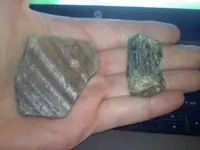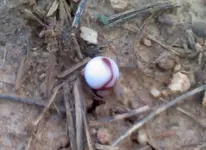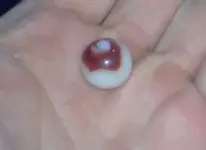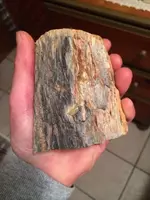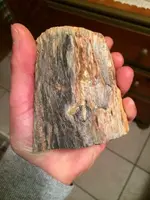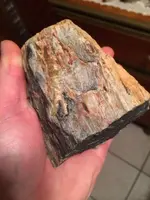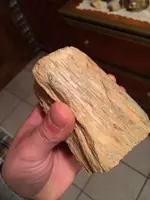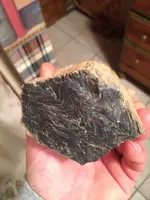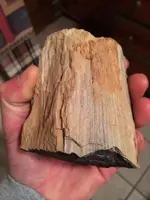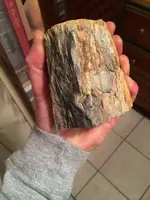Dang, GB I wanna believe you. I think you may be leaving out some info to help me make this decision. My question is since you think this is a fossil: isn't there a process that makes fossils harder over time? Silicification or petrification? It may be what your saying but I'm seeing a mineral here that has formed from natural processes over 10s of 1000s of years. You are about to make this a learning thread for me but I'm not convinced that it's actually from a deer yet. Why not a dinosaur? There is a range of age from the animals living now to animals living millions of years ago. This has to fall in between that range if truly a fossil.
i think it looks like a fibrous mineral as well, but the photos are really not good enough to fairly judge, IMO. But, bear in mind that some types of fossilization involves the mineralization of the organism. In other words, many fossils are minerals!! They've become minerals!
Fossil trilobites made of calcite, shells opalized, etc. Some fossilization involves the organic matter being replaced by mineral. Long story short, a fossil is a fossil, but when the fossilization process involves mineralization of the organism, the result is a fossil that is a mineral. Where did you find it? If Florida, it's not dinosaur, if it's a fossil at all. The entire state of Florida is geologically young.
This page describes types of fossilization:
http://www.fossilmuseum.net/fossilrecord/fossilization/fossilization.htm
From this link:
"Replacement takes place when water dissolves the original hard parts and replaces them with mineral matter. This chemical action may take place slowly, reproducing the microscopic structures of the original organism. Bone, shells and wood are often well preserved in this manner. The most common replacement minerals are calcite, silica, pyrite and hematite. The snails of the Green River Formation in Wyoming are often replaced by silica, a variation of quartz. The ammonites and goniatites of Europe and North Africa are commonly replaced by hematite, which is an iron mineral similar to, but more stable than pyrite. When the original hard parts are replaced quickly they often loose all trace of their original structure, leaving the original shape, but no detail. Agatized woods are often preserved in this manner, (agate is a form of quartz).
Perimineralization
Permineralization takes place when ground water carrying dissolved minerals infiltrates the microscopic pores and cavities in bone, wood or shell. The minerals being deposited produce stony fossils that still contain a good deal of their original solid material. Bones, teeth and many marine organisms are preserved in this way. The fossil wood from the Petrified Forest of Arizona are a famous example of this type of preservation. The fossil teeth and bones of the Oligocene badlands of South Dakota and Nebraska are also common example of this type of fossilization, as well as the extensive deposits of Jurassic dinosaur bones in Utah and Colorado.
Pyritization is a Permineralization process involving sulfur and iron, and can result is formation of exquisite fossils and soft-tissue preservation. Organisms are pyritized when they are in marine sediments saturated with iron sulfides. Pyrite is iron sulfide (FeS2). As organic matter decays it releases sulfide which reacts with dissolved iron in the surrounding waters. Pyrite replaces carbonate shell material due to an undersaturation of carbonate in the surrounding waters. Some plants are also pyritized when they are in a clay terrain, but to a lesser extent than in a marine environment. Pyritized fossils are varied and particularly beautiful, such as this Jurassic Quenstedticeras ammonite and fossils from the Bundenbach Hunsruck Slate in Germany."
--------------------------------------------------
So, you see, some fossilization processes involve an organism becoming a mineral!
http://www.ucmp.berkeley.edu/paleo/fossilsarchive/permin.html
